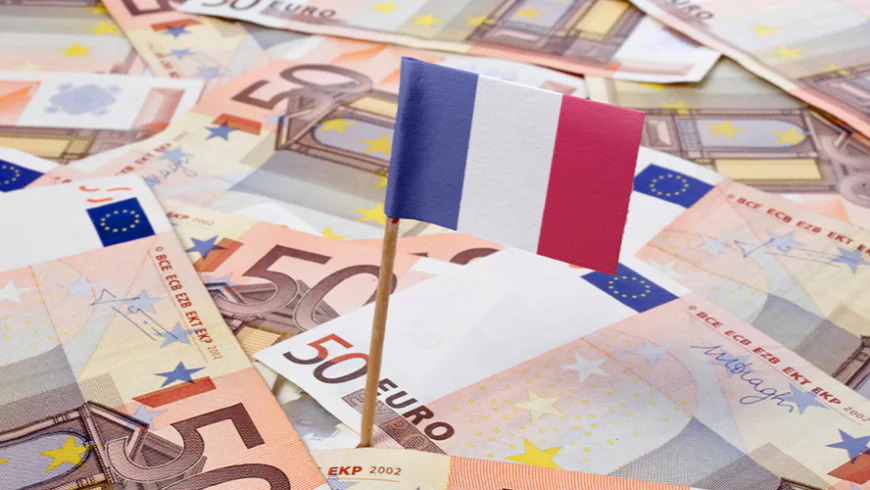France’s Faster Growth Hints at Resilience
France’s GDP grew 0.5% in Q3 2025, driven by exports and investment, but weak consumer spending and political uncertainty pose challenges ahead.

France’s economy grew faster than expected in the third quarter of 2025, offering a sign of resilience in a year that struggled with political and financial uncertainty.
According to Reuters, they indicated the French statistics agency INSEE, gross domestic product (GDP) — the total value of all goods and services produced in the country — rose 0.5% between July and September (Q3)
A Trade-Driven Recovery
The primary driver of France’s growth was exports, which increased by 2.2%, while imports declined by 0.4%. This translates to France selling more goods and services abroad than it buys.
However, what are the implications?
France’s recent success in selling more abroad than it buys signals a notable improvement in its trade balance — but the picture is more complex beneath the surface.
Strong exports in aerospace, luxury goods, and pharmaceuticals underscore the competitiveness of France’s flagship industries, yet they also reveal an uneven economy that is increasingly dependent on global demand rather than domestic resilience.
Moreover, reliance on exports leaves France vulnerable to global headwinds — from supply chain disruptions to geopolitical tensions.

Exports include the sale of aircraft, luxury goods, and energy technology to foreign markets, led by major French companies such as Airbus, TotalEnergies, LVMH, and Safran. These global giants have benefited from a rebound in international trade, as demand for aerospace, energy, and high-end products picked up following years of supply chain disruptions.
The real test for policymakers will be whether this export-driven momentum can be channelled into sustainable, broad-based growth that benefits workers and consumers, not just corporate giants.
Global trade is rebounding as international commerce recovers from the pandemic and the early 2020s' geopolitical tensions, which disrupted shipping and manufacturing. As trade normalises, export-oriented economies like France gain new momentum.
Corporate Investment Signals Confidence
Another encouraging sign comes from corporate investment, which rose 0.9%. This refers to the money businesses spend on long-term assets such as technology, buildings, and research.
Such spending suggests that French firms remain confident in their future, even amid economic headwinds. As with other advanced economies, investment in AI and digital infrastructure has become a key priority, driving new productivity gains.
Weak Consumer Spending Remains a Concern
However, beneath the surface, domestic demand remains weak. Consumer spending, which measures the amount households spend on goods and services, grew by just 0.1%.
Growth built on exports and corporate investment is healthy, but without stronger consumer spending, it risks becoming unbalanced. Political instability could also undermine investor confidence if fiscal clarity does not emerge soon.
Low household spending signals that people are cautious and worried about the future. This can shake confidence in government economic management.
Policymakers must decide whether to focus on helping consumers spend more in the short term or supporting businesses and controlling debt for long-term growth.

This tension creates uncertainty for businesses, which are hesitant to expand or hire when future tax rates and spending plans are unclear.
The latest growth figures also come against a backdrop of political instability and debate over France’s 2026 national budget.
The government aims to reduce the budget deficit from roughly 5.4% of GDP in 2025 to around 4.6% next year, requiring tens of billions in spending cuts while simultaneously increasing investment in strategic areas, such as defence.
By prioritising strategic spending, such as defence or infrastructure, the government aims to stimulate productivity and long-term competitiveness. This can create jobs in targeted industries, even if broader consumer demand is constrained.
In relation to the budget, proposed measures may include freezing certain public expenditures, limiting welfare growth, and maintaining tax brackets at 2025 levels.
This can potentially impact households as freezing tax brackets at 2025 levels means incomes aren’t adjusted for inflation. Combined with limited welfare increases, this could put a strain on household budgets.
Finance Minister Roland Lescure said, "Despite political upheavals and international uncertainties, our companies are investing, exporting, and driving the country forward".
France in the European Context
France is currently the Eurozone’s second-largest economy, after Germany, and its growth trends often serve as a barometer for the region. Its 0.5% GDP growth in Q3 2025 is notable because Germany, Europe’s largest economy, has been struggling with stagnation and weak industrial output.
Compared to Italy and Spain, which are also experiencing tepid domestic consumption, France’s reliance on exports and corporate investment has enabled it to maintain a more robust performance.
Where France stands out is its export-driven resilience. Companies like Airbus, LVMH, and TotalEnergies are helping offset weak domestic consumer spending, which contrasts with Germany’s slower industrial exports and Italy’s structural fiscal constraints.
This gives France a temporary edge in maintaining GDP growth, though the sustainability of that advantage depends on global demand remaining strong.
Ultimately, France’s Q3 growth paints a picture of cautious optimism. Strong exports and corporate investment indicate that the country’s businesses remain competitive and forward-looking; however, weak consumer spending and political uncertainty remind us that the recovery is fragile.
The challenge ahead will be striking a balance between fiscal discipline and policies that empower households and sustain domestic demand. If France can navigate these tensions successfully, it has the potential not only to maintain resilience in the Eurozone but to build a more balanced, long-term economic growth story that benefits both businesses and households.


